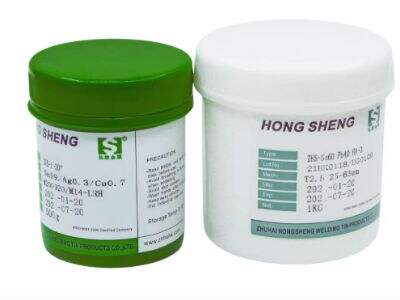Selecting the correct paste solder is vital in the progress of a soldering project. The type of paste solder you use can make a significant difference in how your project performs in the end. From choosing the proper type of glue, since if you pick the wrong one, it may not stick properly can make you project look messy. There are several varieties of paste solder, and it is essential to know what they are and how to choose the right one for your needs.
How to Use Paste Solder for Soldering Applications and Benefits of Paste Solder
Various kinds of paste solder exist, each with its unique properties and applications. The most common types of paste solder are lead solder, lead-free solder, and flux-cored solder. Lead-based solder to use a beginner since it is easy to keep working, melting at a low temperature. That makes it very well suited for beginners who are learning to solder. Lead-free solder is not as common, but it's a much safer choice for the planet, as it's less harmful, but it's also a little trickier to work with. It melts at a higher temperature so that can be more difficult. Next, there is flux-cored solder, which contains a special inner core inside the solder wire called flux. This flux allows the solder to flow more freely and cleans the metal surfaces as you are working, making your soldering easier and more effective.
Considerations for Selecting Paste Solder:
There are a number of important considerations when choosing solder paste for your project. Before You Solder: The Workpiece Metal To Solder works better with some metals than others, so choose a paste solder that works well with whatever metal you are using. Thus some solder is more effective on copper than it is, on aluminum, for instance. Also, consider how large your project is and how much solder you may need. Certain projects need more solder than others, so it makes sense to select a paste solder that comes in a size that works for you. For a small project, a huge tube of solder may not be necessary, but that does not hold true for larger projects — you will want enough solder to put it together.
What You Need to Know to Select the Flowable Solder that Fits Your Expertise:
If you have never soldered before, it’s pretty crucial that you use a paste solder that’s easy to apply. Because lead-based solder melts easily and flows well, it is an excellent option for soldering novices, as it makes soldering much more natural. For those with experience with soldering, you may want to expand the challenge by attempting lead-free or flux-cored solder instead. Such type can provide you skills and also a new experience. Always be sure to read the instructions from start to finish, and it is highly recommended that you practice on scrap metal before performing the process on your actual project. This ensures that you are comfortable with the solder you selected and will have confidence as you begin your project.
Why Paste Solder Flux Matters:
Paste solder consists of a very important thing called flux. It aids the flow of solder and cleans the metal as you work. Paste solder (those that also contain flux) can make your task easier, help you to make cleaner solder joints and provide stronger solder joints. This indicates that your pieces will stick together more smoothly and be more attractive. Flux also prevents rust, and oxidation, which can ruin your work. If you are using solder paste, make sure that flux is included in it. A minor ingredient that can greatly change the nature of venturing in your soldering project.
Finding the Right Melting Temperature and Flow
Selecting paste solder for your application will depend on getting the right melting temperature for your application and how well it flows. A soldering iron applied for too long also blocks the item up and makes the joint weaker, but if it is too short, it will cause offseason joints and burn joint edges out. Conversely, if the solder doesn't melt at a high enough temperature, it may not bond with the metal surfaces you are working with. That puts you in for trouble down the line when parts start coming apart. Finding that balance may require some trial and error with different paste solder types and soldering iron temperatures, too. You get to find what works for you and your project by testing and experimenting with various alternatives.
Things to keep in mind when noodles for solder paste success in soldering paste solder is very important. With this overview of types of paste solder, project- and skill-related factors to consider in your soldering, the right solder for your skill level, how much flux you need to know which temperature you want to keep the flow, and a combination of temperature and flow that you like you can have everything you need to make your soldering project just beautiful. Good luck soldering your projects, and don't forget to always choose Hong Sheng as your soldering go-to.
 EN
EN
 AR
AR
 FR
FR
 DE
DE
 RU
RU
 VI
VI
 TH
TH
 TR
TR
 MS
MS
 BE
BE


